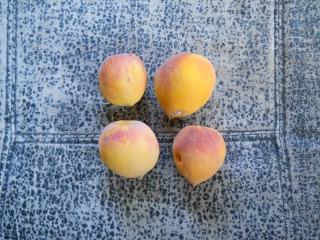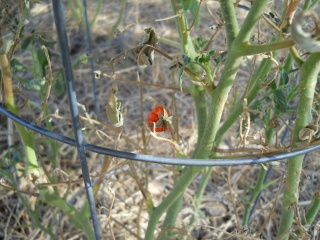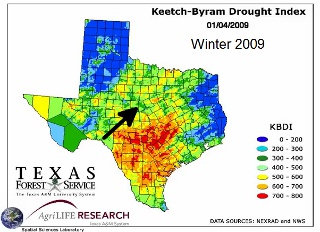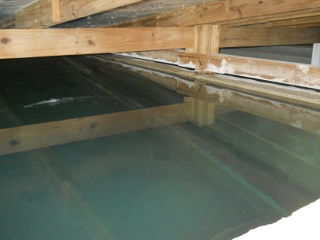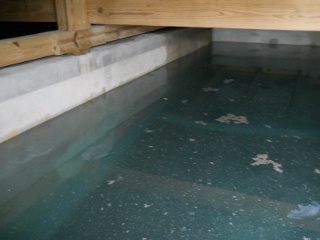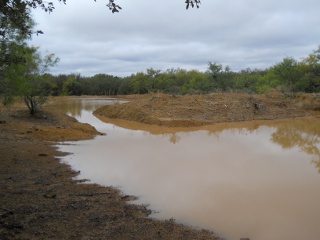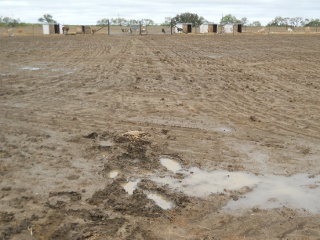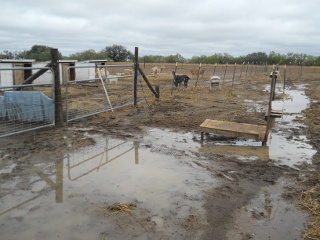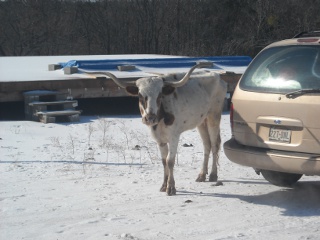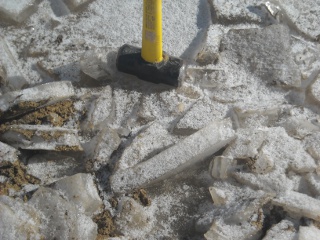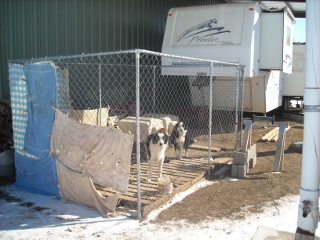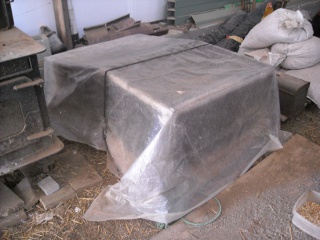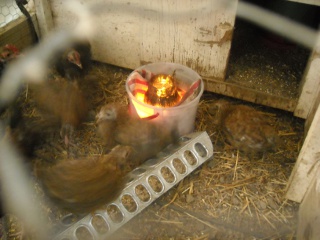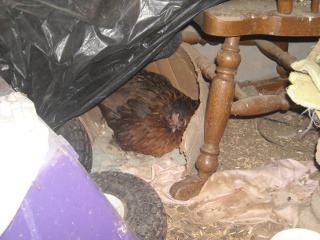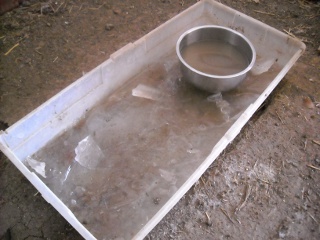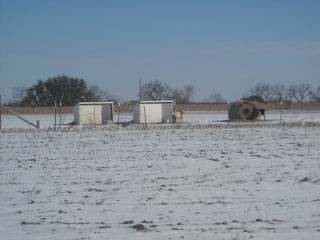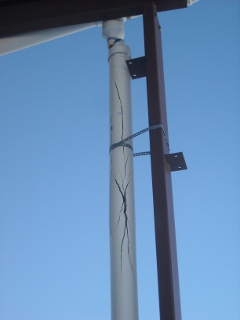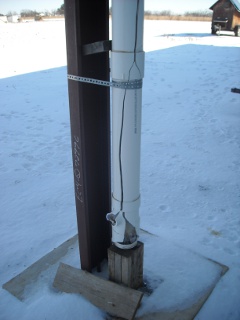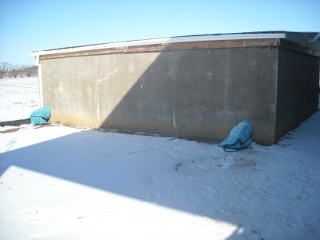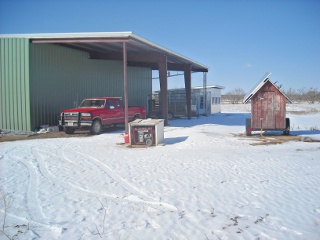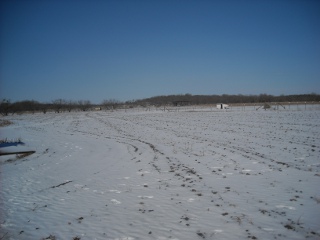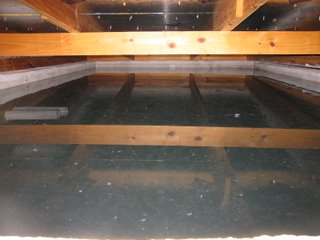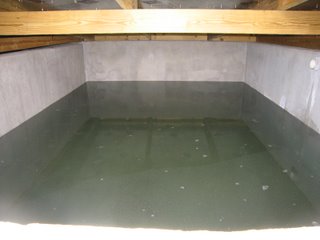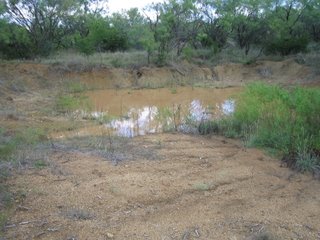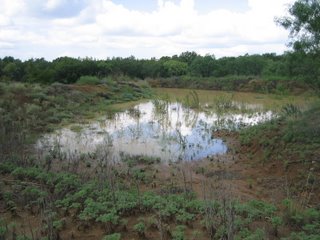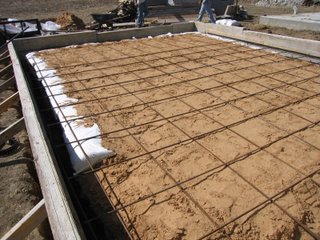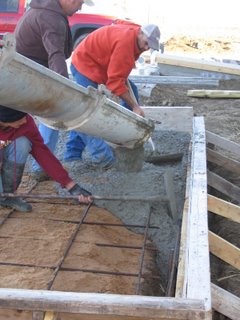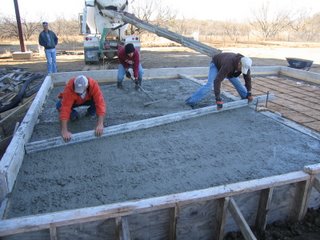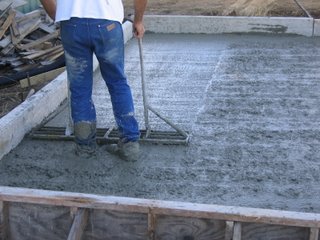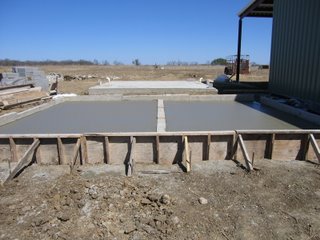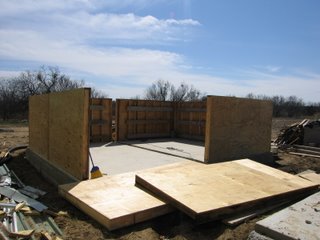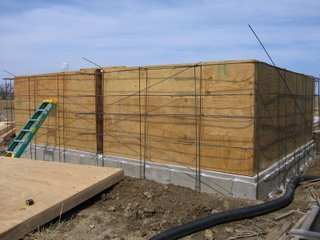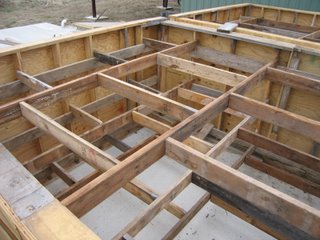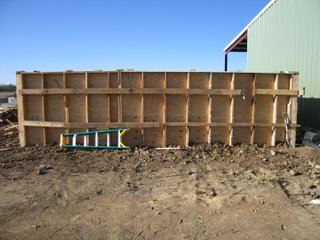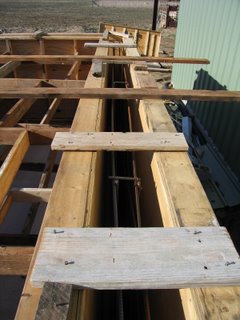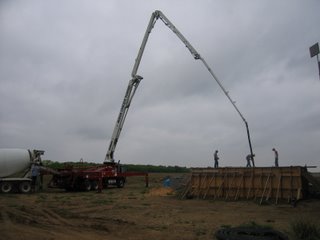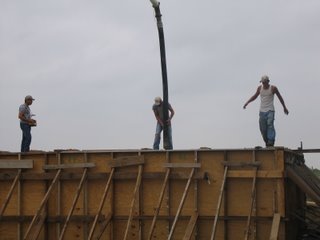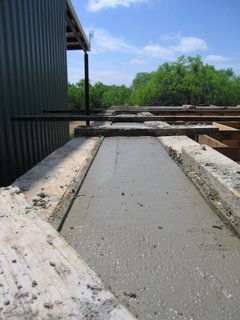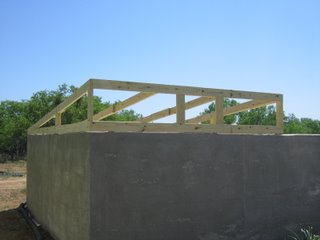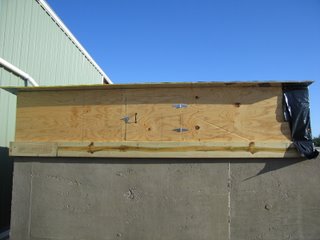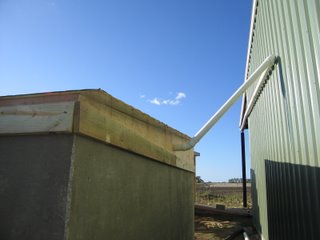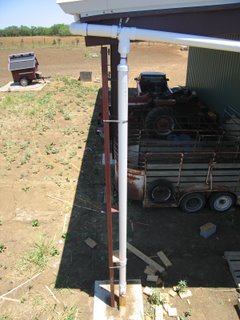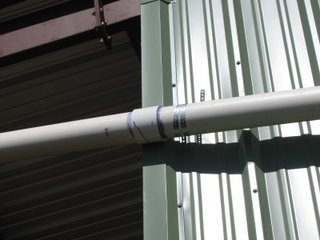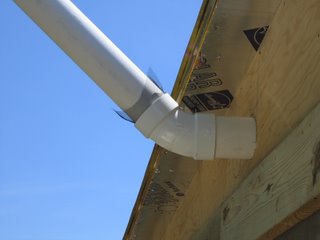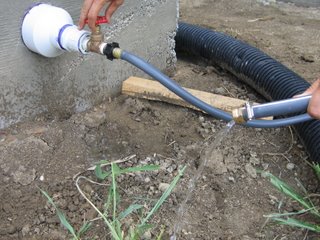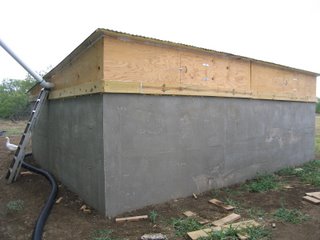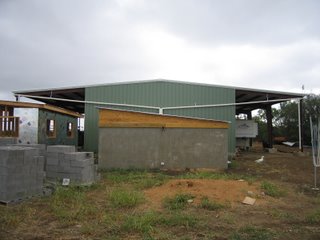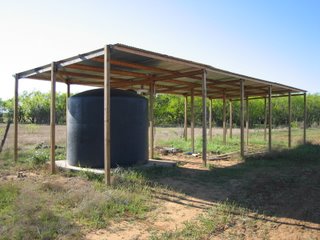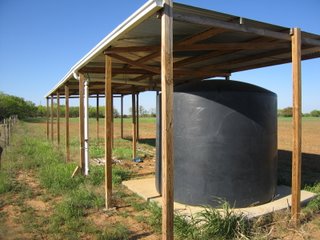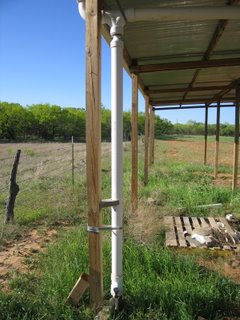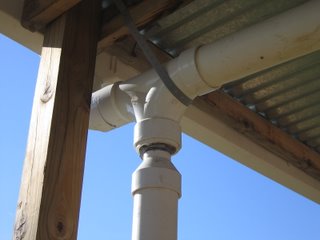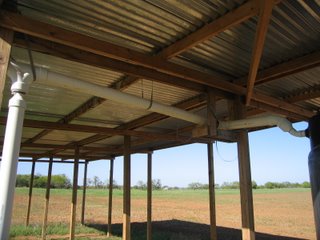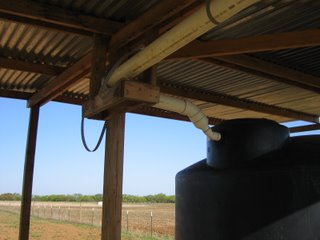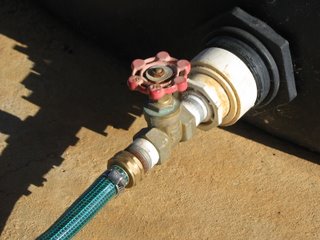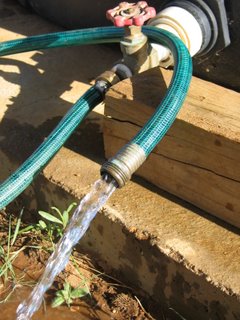As anyone who reads our blog probably knows, we have been in an extensive drought this year (they say the worst in 50 years), starting especially October 2010. By the time we got through September of this year, we had probably had around 1/4 of rain we normally get year to date; and the groups’ catch-water containers and ponds were “running on fumes.” Back in a previous blog post about our 2008 garden, I had indicated that I had come to a point of deciding to not go to the world for water again (our water doesn’t magically appear out of faucets); and with the way things were going, at times it would start to get a little desperate — I was even starting to prepare mentally and logistically (with sand filters, etc.) for having to start to drink pond water.
The drought has been pretty devastating state-wide. Many ranchers have had to completely liquidate their cattle due to lack of water, tanks (ponds) that we’ve never seen dry before have gone dry, and hay has been scarce and expensive.
Regardless of how things occur in this world, the Lord Jehovah IS faithful, IS gracious, IS merciful. I believe we must always remember that He IS those things, regardless of our circumstances. It is only by His perfect and infinite graces, mercies and wisdom, in accordance with His perfect will and sovereignty, that He ever reveals those things to us in tangible or experimental (experiential) ways.
Throughout our time of drought this year, God has graciously granted provisions for all of us here to maintain ourselves and our animals without having to specially go to the world for water. Our personal cistern and polypropylene tank once again never ran dry, even after discovering a pretty significant leak in the floor of the cistern, where we were probably losing 500 gallons a week at one point (argh!!). When they would get low, the Lord would drop some rain on us to grant another few weeks.
It has been an interesting time of faith and trust-testing. Through it though, we are reminded daily upon Whom we depend, and look to Him daily for those, sometime weekly-provided, provisions; and through it, we find our sin and failures, which is a good thing, and is for what we pray, along with subsequent repentance.
I also wanted to share a couple of other things that occurred along the way that I have taken, hopefully not out of vain imagination, as tokens from the Giver of provision.
We had a tough time keeping up with the orchard. We really don’t have a way of watering the trees right now directly from a water source; and so we have to haul water to them, which is difficult with 25-30 trees. We did some pond runs a couple of times, and watered some from the cistern, and at one point I finally got the who-would-have-thought-it idea of watering them using our camper grey water (Lord please forgive me for not using that water sooner and just sending it to waste). Still, with 100 degree F temperatures for month on end, and no rain, some of the trees I believe haven’t made it, although I guess we’ll know better next Spring, Lord willing.
However, one day while I was out there in the orchard, I looked, and lo, and behold, on one of the trees, there were some peaches actually growing! I was astounded, as that tree hadn’t really received even much of the manual watering. One had fallen to the ground, and here are the four I was able to harvest. And they tasted wonderfully!
Moreover, we had at one point in the Spring received a few inches of rain; and so I decided to plant our tomatoes. Well, obviously I didn’t know what was to come with the rest of Spring and Summer, in temperature and precipitation; but we did what we could to try to keep them at least alive. Through it all though, along in September one day, I looked, and lo, and behold, there was actually a little, tiny tomato that had grown! I smiled greatly, and thought of the Lord’s providence, and how He grants all of these things in accordance with His will. It was a beautiful sight to see that tomato and a beautiful thing to behold God’s providential hand:
Further, at one point, our teacher Mr. Bunker forwarded the below video on to us, as an encouragement in a weary time. Here is a picture of the beginning of that video, and I’ve drawn in an arrow pointing to right about where we are (if you click the picture, you can see a larger version):
If you watch the video, keep an eye on where we are:
If you’ll notice, our county and the one right to our east were the last ones to go into the extreme drought. The Lord graciously and mercifully granted quenchings amidst the fire, even though we don’t deserve them.
By October, the tanks (ponds) on the land were really starting to get low; and even our county had gone into the highest level of drought the professionals note. If the tanks were to go dry, all of our cows would have to go. But, once again, the Lord graciously and mercifully granted a revelation of His graces and mercies in bringing the rains; and for the time it rained, it came a-plenty! We received over 5 inches in around 24 hours, which caused water to run, which filled the tanks, and provided lots of water for the catch-water tanks and cisterns around the land.
Here is the near side of our cistern (the side that fills first):
Before looking into the far side, I had hoped that perhaps the water would have gone over the middle divider at least somewhat; but when I looked, this is what I found!
And then it was time to check the pond. Wow! This is one of the fullest times it’s ever been!
What a humbling, welcome site to see water in our containment systems! We are so very grateful to the Lord!
With the rains around here comes mud, and it had been a while since we had experienced slogging around in it. And Sue got a quick reminder of what it was like, as the mud reached out and grabbed her to the ground when she was going to milk the goats (you can see a little of the food spilled). But, given the circumstances, I don’t believe she minded. 🙂
And I don’t think the goats minded the water either:
The past 12 months have been a time to reflect and never forget. May we ever remember God’s direct hand in our provisions, as He is the one who brings the rain; and we pray for His continued provisions and healing of the land. We pray He would grant us learning from these difficult times, and grow us in trust in Him. May we always be grateful, humbled and awed by His loving, condescending, gracious, merciful, and caring hand. And may these things bring us into greater obedience to Him, out of love for Him. Amen.
(Please don’t skip the following part:)
Job 36
1 Elihu also proceeded, and said,
2 Suffer me a little, and I will shew thee that I have yet to speak on God’s behalf.
3 I will fetch my knowledge from afar, and will ascribe righteousness to my Maker.
4 For truly my words shall not be false: he that is perfect in knowledge is with thee.
5 Behold, God is mighty, and despiseth not any: he is mighty in strength and wisdom.
6 He preserveth not the life of the wicked: but giveth right to the poor.
7 He withdraweth not his eyes from the righteous: but with kings are they on the throne; yea, he doth establish them for ever, and they are exalted.
8 And if they be bound in fetters, and be holden in cords of affliction;
9 Then he sheweth them their work, and their transgressions that they have exceeded.
10 He openeth also their ear to discipline, and commandeth that they return from iniquity.
11 If they obey and serve him, they shall spend their days in prosperity, and their years in pleasures.
12 But if they obey not, they shall perish by the sword, and they shall die without knowledge.
13 But the hypocrites in heart heap up wrath: they cry not when he bindeth them.
14 They die in youth, and their life is among the unclean.
15 He delivereth the poor in his affliction, and openeth their ears in oppression.
16 Even so would he have removed thee out of the strait into a broad place, where there is no straitness; and that which should be set on thy table should be full of fatness.
17 But thou hast fulfilled the judgment of the wicked: judgment and justice take hold on thee.
18 Because there is wrath, beware lest he take thee away with his stroke: then a great ransom cannot deliver thee.
19 Will he esteem thy riches? no, not gold, nor all the forces of strength.
20 Desire not the night, when people are cut off in their place.
21 Take heed, regard not iniquity: for this hast thou chosen rather than affliction.
22 Behold, God exalteth by his power: who teacheth like him?
23 Who hath enjoined him his way? or who can say, Thou hast wrought iniquity?
24 Remember that thou magnify his work, which men behold.
25 Every man may see it; man may behold it afar off.
26 Behold, God is great, and we know him not, neither can the number of his years be searched out.
27 For he maketh small the drops of water: they pour down rain according to the vapour thereof:
28 Which the clouds do drop and distil upon man abundantly.
29 Also can any understand the spreadings of the clouds, or the noise of his tabernacle?
30 Behold, he spreadeth his light upon it, and covereth the bottom of the sea.
31 For by them judgeth he the people; he giveth meat in abundance.
32 With clouds he covereth the light; and commandeth it not to shine by the cloud that cometh betwixt.
33 The noise thereof sheweth concerning it, the cattle also concerning the vapour.
Job 37
1 At this also my heart trembleth, and is moved out of his place.
2 Hear attentively the noise of his voice, and the sound that goeth out of his mouth.
3 He directeth it under the whole heaven, and his lightning unto the ends of the earth.
4 After it a voice roareth: he thundereth with the voice of his excellency; and he will not stay them when his voice is heard.
5 God thundereth marvellously with his voice; great things doeth he, which we cannot comprehend.
6 For he saith to the snow, Be thou on the earth; likewise to the small rain, and to the great rain of his strength.
7 He sealeth up the hand of every man; that all men may know his work.
8 Then the beasts go into dens, and remain in their places.
9 Out of the south cometh the whirlwind: and cold out of the north.
10 By the breath of God frost is given: and the breadth of the waters is straitened.
11 Also by watering he wearieth the thick cloud: he scattereth his bright cloud:
12 And it is turned round about by his counsels: that they may do whatsoever he commandeth them upon the face of the world in the earth.
13 He causeth it to come, whether for correction, or for his land, or for mercy.
14 Hearken unto this, O Job: stand still, and consider the wondrous works of God.
15 Dost thou know when God disposed them, and caused the light of his cloud to shine?
16 Dost thou know the balancings of the clouds, the wondrous works of him which is perfect in knowledge?
17 How thy garments are warm, when he quieteth the earth by the south wind?
18 Hast thou with him spread out the sky, which is strong, and as a molten looking glass?
19 Teach us what we shall say unto him; for we cannot order our speech by reason of darkness.
20 Shall it be told him that I speak? if a man speak, surely he shall be swallowed up.
21 And now men see not the bright light which is in the clouds: but the wind passeth, and cleanseth them.
22 Fair weather cometh out of the north: with God is terrible majesty.
23 Touching the Almighty, we cannot find him out: he is excellent in power, and in judgment, and in plenty of justice: he will not afflict.
24 Men do therefore fear him: he respecteth not any that are wise of heart.
— David
